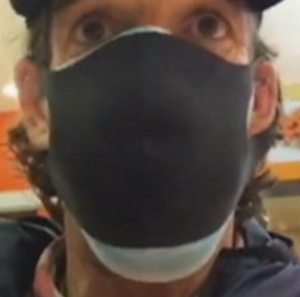This blog is not intended as advice. It is for educational and research purposes only. Read this disclaimer first if you want to read this post.
In an article on the ABC News Website ” Coronavirus outbreak leaves Australian trapped near Wuhan as China locks down cities” By Emma Elsworthy (1 Feb 2020), Emma says “Tim McLean wears two face masks when he steps onto the abandoned streets of Ezhou”. Their is no critical analysis of the situation.

Almost all the pictures of people wearing masks to protect themselves against the coronavirus almost always choose the wrong protection – surgical masks (no protection), or have proper P2/P95 masks but on a child (poor fit, no protection), or are poorly fitted. The face masks in the picture above add an interesting slant.
Breathing out produces plumes of air from the nose and mouth. Breathing in, the air flow pattern is totally different, as the air flows over the surface of the face. It is particularly difficult to obtain a good fit, even with a professional using quantitative fit testing to guide the fit. In theory a good fit with a P2 mask will reduce the concentration of the toxic material (gas, vapour or particulate – included aerosols containing coronovirus) by a factor of 20. In practice the protection is 2 or 3.
As it is so difficult to get a good fit, putting a second mask ontop of the first increases the flow resistance and even more contaminated air will flow through the seal.
It probably does not matter for the person in the picture above as it appears the face masks do not appear to be P2/N95 particulate masks, so the protection is still zero.
The only real protection is to stop the wearer touching their face, but many people also touch their face frequently to adjust a mask.
